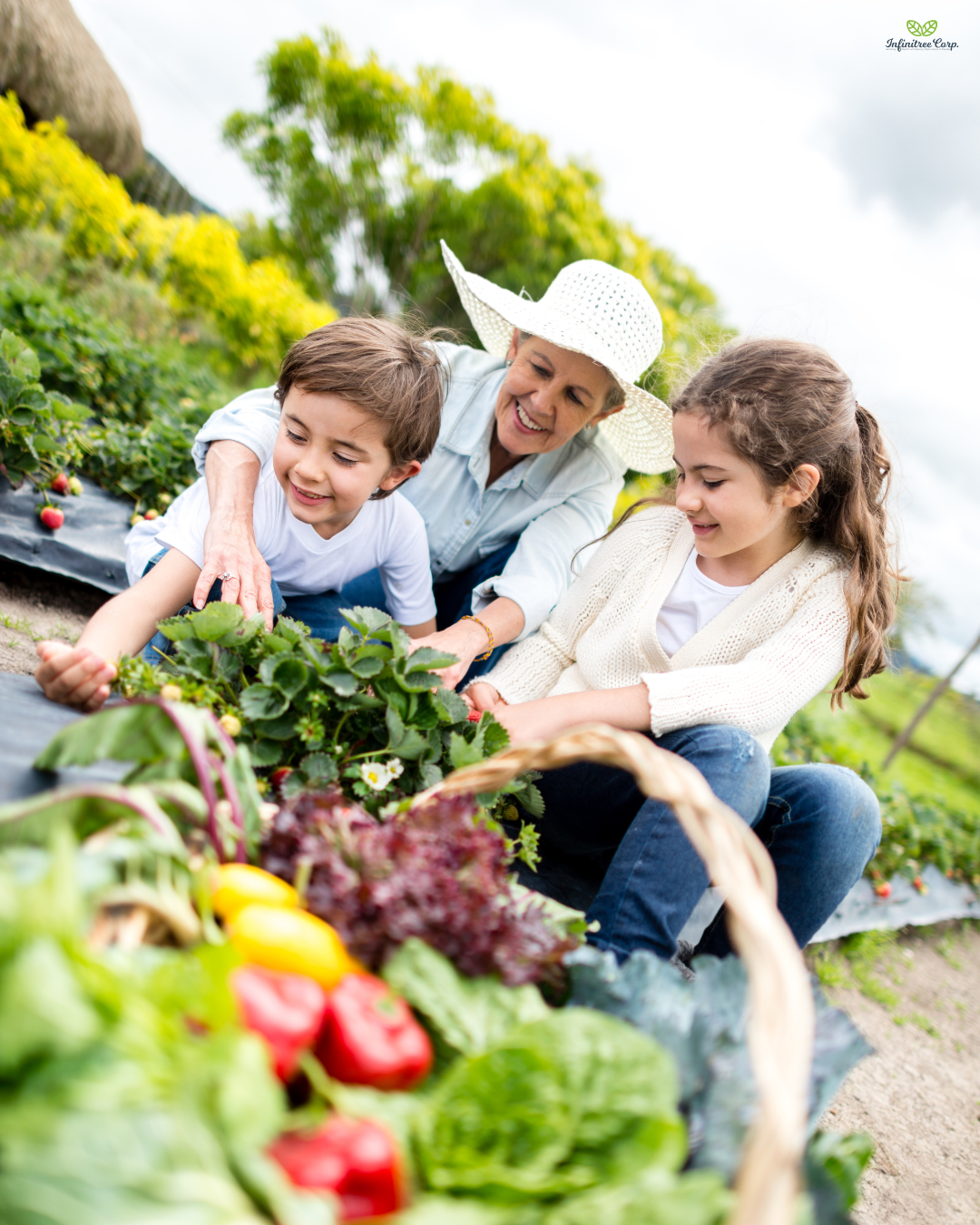
How Gardening Together Can Teach Kids About Nutrition and Growth
InfinitreeEditor.Jo
How Gardening Together Can Teach Kids About Nutrition and Growth
A Simple Garden, A Big Lesson
One summer, I decided to start a small vegetable garden with my kids. At first, they were hesitant—digging in the dirt didn’t seem as exciting as video games. But as the weeks passed, something changed. They checked on their plants every morning, watered them diligently, and excitedly reported when a tiny green sprout appeared.
Then came the moment of truth—harvesting fresh cherry tomatoes, cucumbers, and carrots. The pride in their eyes was undeniable. And when they eagerly ate the vegetables they had grown, I realized something powerful: gardening wasn’t just about plants. It was about teaching my kids where food comes from, how nutrition impacts growth, and the joy of healthy eating.
Kids and Disconnection from Food
Many children today have little understanding of where their food comes from. With busy schedules, processed meals, and fast food options, they often miss out on:
- Nutritional Awareness: Understanding which foods help their bodies grow strong.
- Healthy Eating Habits: Kids are more likely to reject vegetables if they haven’t engaged with them.
- Physical Activity and Connection to Nature: Gardening encourages movement and outdoor play.
By involving kids in gardening, we can bridge the gap between food and nutrition while supporting their physical and emotional development.
How Gardening Supports Growth and Nutrition
-
Hands-On Learning Boosts Nutritional Awareness
- Kids are more likely to try new foods if they’ve grown them themselves.
- Gardening teaches them how different foods contribute to health and growth.
-
Encourages Physical Activity
- Digging, planting, and harvesting improve strength, coordination, and endurance.
-
Supports Mental and Emotional Well-being
- Gardening reduces stress and fosters a sense of responsibility and patience.
-
Enhances Gut Health and Immunity
- Exposure to soil-based microbes can help strengthen kids’ immune systems.
-
Teaches Patience, Responsibility, and Problem-Solving
- Caring for plants requires consistency and learning from challenges (like pests or weather changes).
How to Start Gardening with Kids
Starting a garden doesn’t have to be complicated. Whether you have a backyard, a small patio, or just a few pots on a windowsill, you can introduce kids to the magic of growing food.
1. Choose Easy-to-Grow Plants
Why It Helps:
Fast-growing plants keep kids engaged and excited about the process.
Best Plants for Beginners:
- Cherry Tomatoes – Quick-growing and fun to pick.
- Carrots – Kids love pulling them from the soil.
- Lettuce – Grows quickly and can be used in salads.
- Strawberries – Sweet and rewarding.
- Herbs (Basil, Mint, Chives) – Simple to grow indoors or outdoors.
Pro Tip:
Let your child pick their own “special plant” to take care of.
2. Create a Kid-Friendly Gardening Space
Why It Helps:
A dedicated area makes kids feel responsible for their plants.
How to Do It:
- Use raised garden beds or containers if space is limited.
- Provide small, child-friendly gardening tools.
- Label plants with fun, colorful signs.
Pro Tip:
Allow kids to decorate plant pots to personalize their garden.
3. Make Gardening a Daily Habit
Why It Helps:
Consistency helps kids build responsibility and patience.
How to Do It:
- Assign simple daily tasks, such as watering or checking for weeds.
- Create a garden journal where they can track plant growth.
Pro Tip:
Use a “garden calendar” to mark important milestones, like sprouting and harvesting.
4. Teach the Connection Between Food and Growth
Why It Helps:
Understanding nutrition helps kids make healthier food choices.
How to Do It:
- Talk about how each vegetable supports their body.
- Carrots = Good for eyesight
- Tomatoes = Help skin and immune system
- Spinach = Builds strong bones
- Cook meals together using their homegrown produce.
Example Activity:
- Make a simple “Garden to Table” Salad with lettuce, cherry tomatoes, and cucumbers.
Pro Tip:
Create a game where kids match vegetables to their health benefits.
5. Turn Gardening into a Fun Family Project
Why It Helps:
Spending time together strengthens family bonds and makes learning enjoyable.
How to Do It:
- Plan a “Garden Day” every weekend for weeding, watering, and checking progress.
- Take photos and create a “Plant Growth Scrapbook.”
- Celebrate the first harvest with a special family meal.
Pro Tip:
Host a friendly “Who Grew It Best?” challenge to keep kids engaged.
Putting It All Together: A Week of Gardening Activities
Monday: Pick a new plant to grow and learn about its health benefits.
Tuesday: Water plants and check for new sprouts.
Wednesday: Draw and label plants in a garden journal.
Thursday: Talk about how garden vegetables support strong bodies.
Friday: Make a meal using ingredients from the garden.
Saturday: Play a fun garden-themed game (like a scavenger hunt).
Sunday: Relax and enjoy time outside with the plants.
By making gardening an interactive and rewarding experience, kids will develop a lifelong appreciation for nutrition and healthy eating habits.
Conclusion: Growth Begins in the Garden
Gardening isn’t just about growing plants—it’s about growing knowledge, responsibility, and healthier habits. When kids experience the joy of planting, nurturing, and harvesting their own food, they develop a deeper connection to nutrition and their own well-being.
Pair gardening with a balanced diet and supplements like Opti-up Alpha Plus to ensure your child gets all the essential nutrients they need for healthy growth. Let’s plant the seeds of knowledge today so our kids can grow into strong, healthy, and confident individuals.
Disclaimer: This article is for informational purposes only and does not constitute medical advice. Please consult your healthcare provider before making significant dietary changes or introducing new supplements to your child’s routine.













